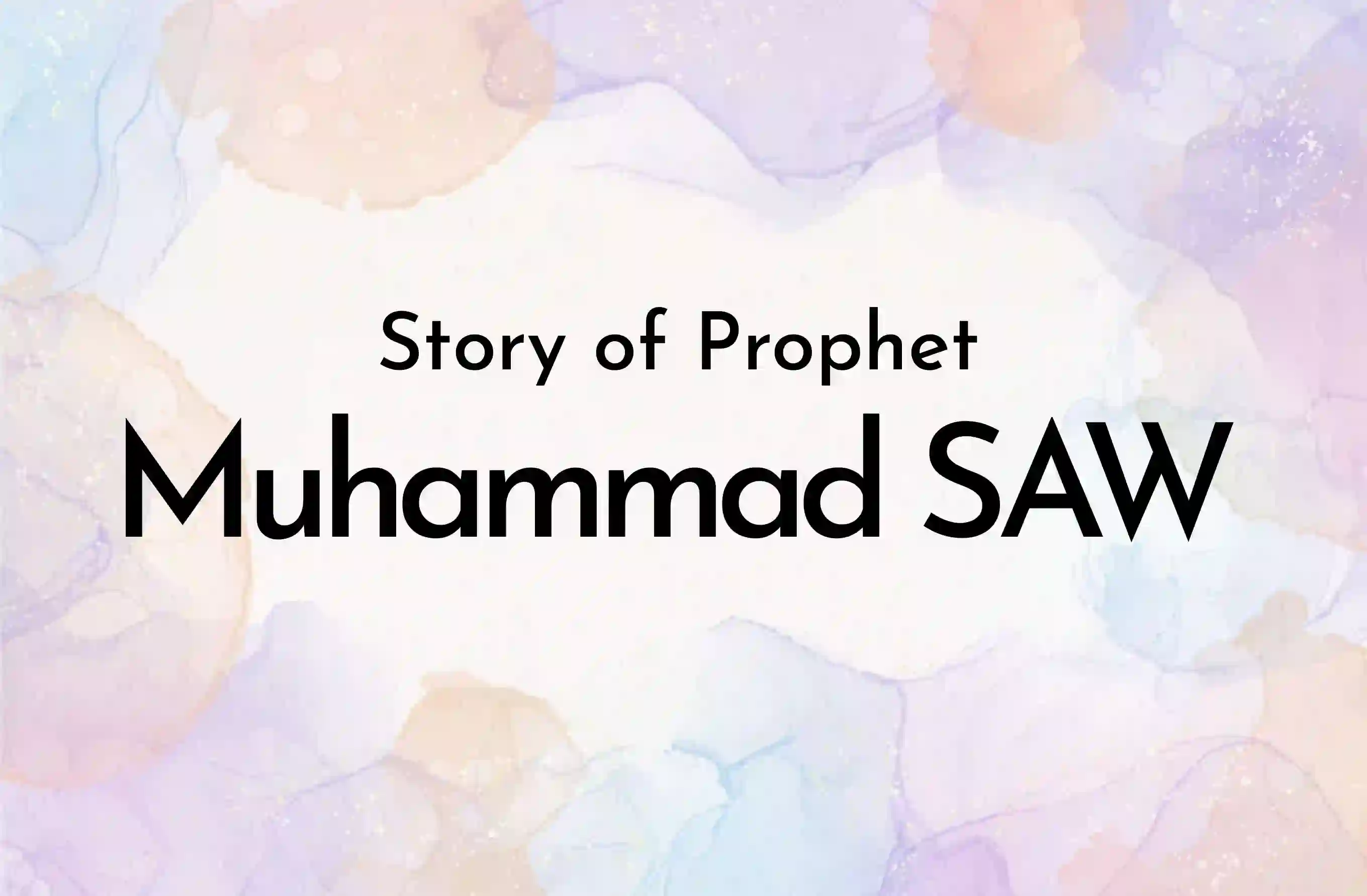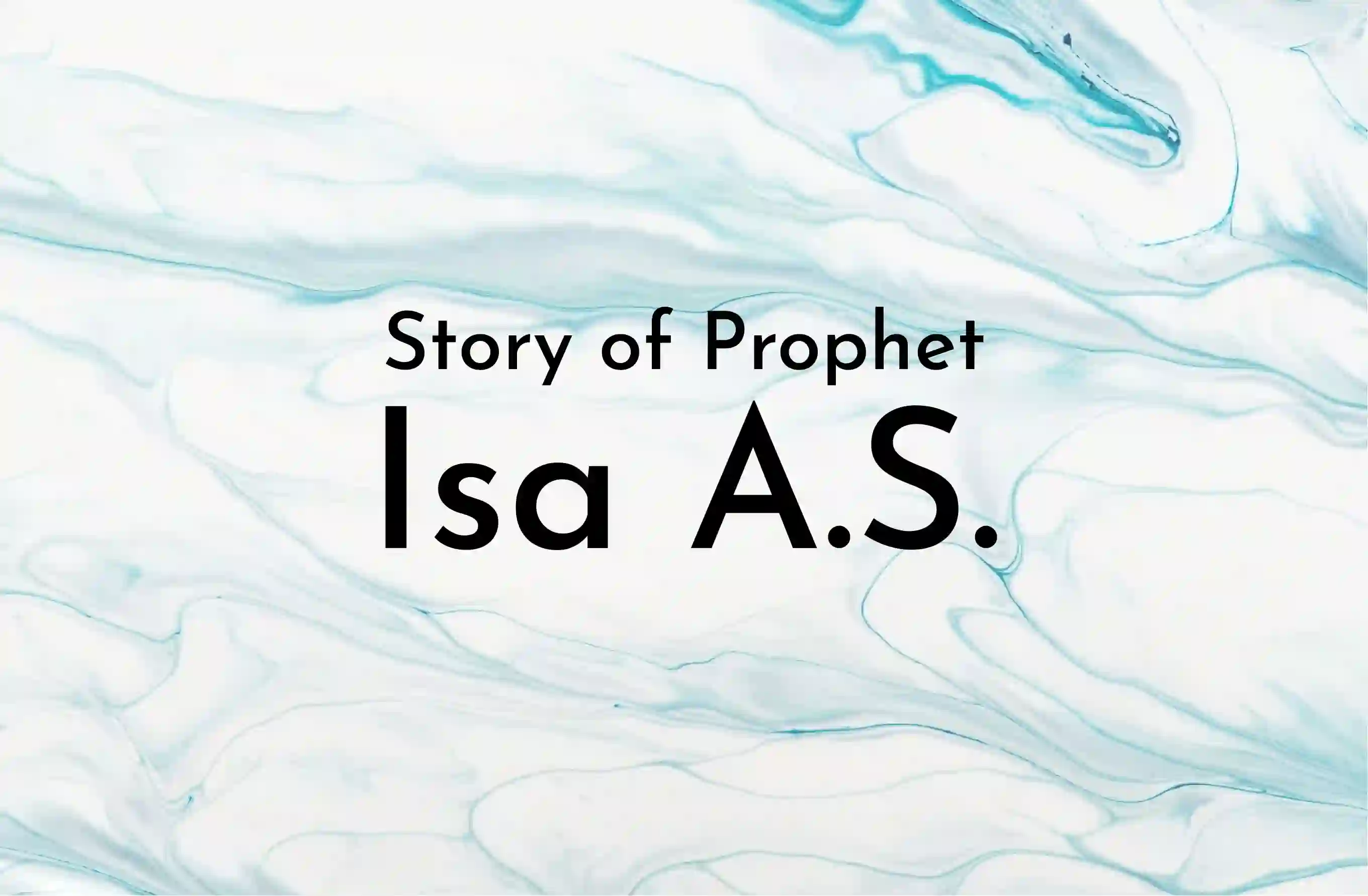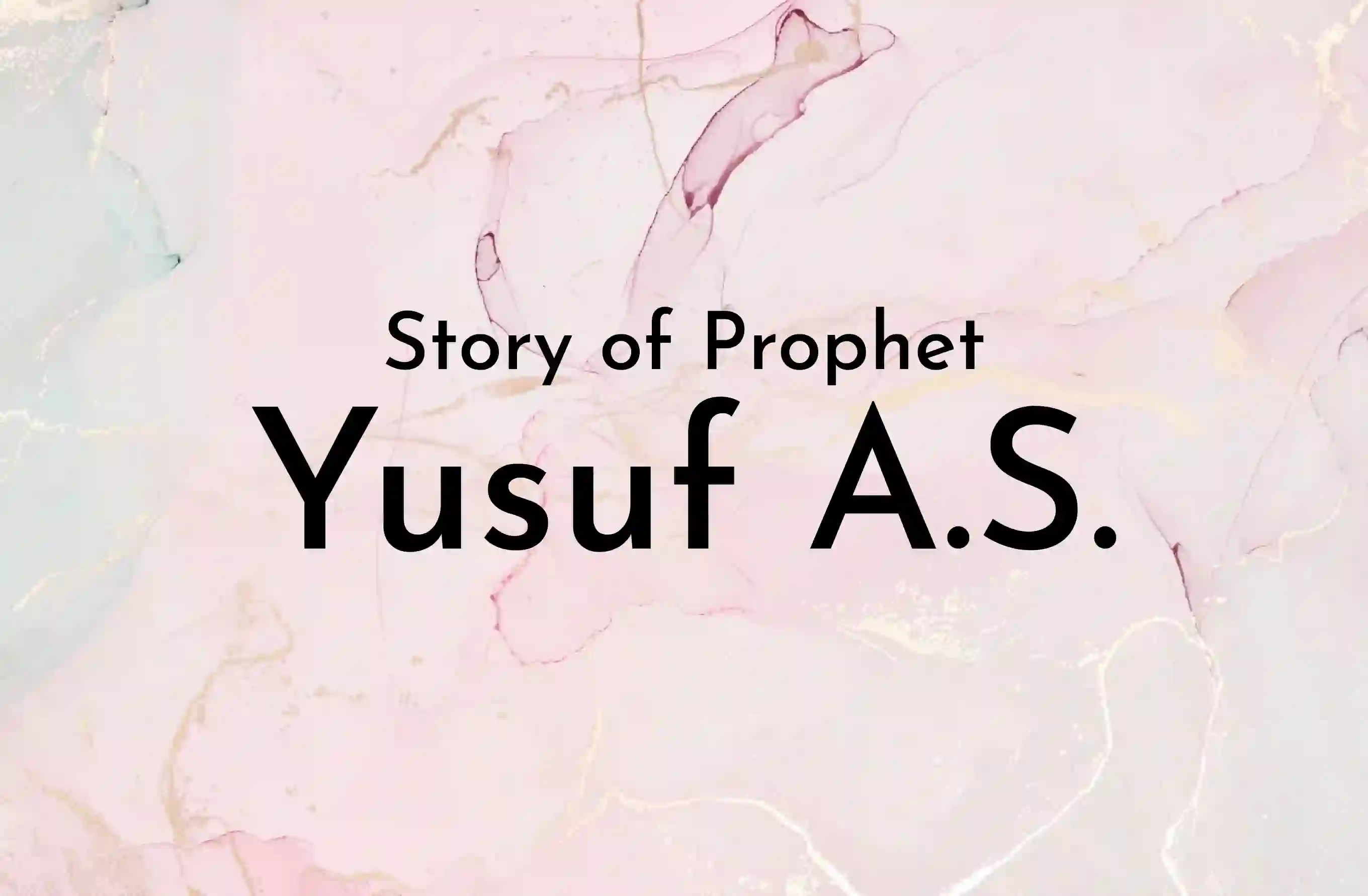Story of Prophet Muhammad SAW
Birth and Early Life
Muhammad (PBUH) was born around 570 CE in Mecca, a city in present-day Saudi Arabia. He was born into the Quraysh tribe, a prominent and influential clan in Mecca involved in the trade. His father, Abdullah, died before he was born, and his mother, Amina, passed away when he was only six, leaving him an orphan. He was initially under the care of his grandfather, Abdul-Muttalib, a revered leader of the Quraysh tribe, and after his grandfather's death, his uncle, Abu Talib, raised him. Despite these early adversities, Muhammad (PBUH) grew up known for his honesty, integrity, and kindness, earning him the nickname 'Al-Amin' or 'the trustworthy.'
Marriage to Khadijah
When Muhammad (PBUH) was 25 years old, he married Khadijah, a wealthy widow who was 15 years his senior. She was a successful businesswoman and was impressed by Muhammad's (PBUH) character when he worked for her as a merchant. They had a loving and supportive marriage that lasted 25 years, and she bore him four daughters (Zainab, Ruqayyah, Umm Kulthum, and Fatimah) and two sons (Qasim and Abdullah), who sadly died in infancy. Khadijah was a source of immense comfort and support to Muhammad (PBUH), and she was the first person to believe in his prophethood.
The First Revelation
At 40, Muhammad (PBUH) began spending a lot of time in solitude, retreating to the Cave of Hira on Mount Hira for prayer and contemplation. During one of these retreats, in 610 CE, he experienced a terrifying event when the angel Gabriel appeared and commanded him to recite. Gabriel revealed verses that are now part of the Quran. Muhammad (PBUH) was greatly shaken by this experience and returned home to Khadijah, who reassured him and became his first follower.
Beginning of Prophethood
Over the next 23 years, Muhammad (PBUH) received further revelations, collectively known as the Quran. He was instructed to preach these revelations, proclaiming the oneness of God (Tawheed), urging moral and social reform, and warning of the Day of Judgment. He initially faced strong opposition and persecution from the Quraysh and other tribes who saw his teachings threatening their social and economic order.
The Hijra
By 622 CE, the persecution had become so severe that Muhammad (PBUH) sent some followers to Abyssinia (present-day Ethiopia) for protection. Later in the same year, he and his followers migrated north to Yathrib (later renamed Medina), a journey known as the Hijra, marking the beginning of the Islamic lunar calendar. The leaders of Medina accepted Muhammad (PBUH) as a political and spiritual leader, allowing him to establish a new community and state based on Islamic principles.
Life in Medina
In Medina, Muhammad (PBUH) created a constitution known as the Constitution of Medina, which ensured the rights of all residents, including Muslims, Jews, and other tribes. His role in Medina was far more than that of a spiritual leader; he was also a political leader, a lawmaker, a judge, and a military commander.
Battles and Expansion of Islam
After settling in Medina, Muhammad (PBUH) and his followers faced a series of military conflicts with the Quraysh tribe and their allies. The most significant of these were the Battles of Badr (624 CE), Uhud (625 CE), and the Trench (627 CE).
The Muslims, although vastly outnumbered at the Battle of Badr, were victorious. However, during the Battle of Uhud, the Muslims faced severe losses due to a tactical mistake by some of their men. The Battle of the Trench, named for the defensive trench that the Muslims dug around Medina, resulted in a stalemate. Still, it was a strategic victory for the Muslims, as the Quraysh's allies began to doubt their ability to overcome the Muslims.
The period following these conflicts saw the rapid expansion of Islam, with many Arab tribes and Jewish communities entering into treaties with the Muslims, accepting Islam, or agreeing to peaceful coexistence.
The Treaty of Hudaybiyyah
In 628 CE, Muhammad (PBUH) and his followers wished to perform the Umrah (lesser pilgrimage) and set out toward Mecca. However, the Quraysh stopped them at Hudaybiyyah, resulting in negotiations and the signing of the Treaty of Hudaybiyyah. Though the terms seemed unfavorable to the Muslims, the treaty brought about a much-needed period of peace, during which Islam expanded rapidly.
The Conquest of Mecca
The Quraysh eventually broke the treaty, and in 630 CE, Muhammad (PBUH) led an army of 10,000 followers to Mecca. The city surrendered with little resistance. Remarkably, Muhammad (PBUH) declared a general amnesty, forgiving the people who had persecuted him and his followers. He also destroyed the idols in the Kaaba, re-establishing it as a sacred center dedicated to worshipping one God.
Final Years and Death
After the conquest of Mecca, Muhammad (PBUH) focused on spreading and consolidating the teachings of Islam. He led the Farewell Pilgrimage to Mecca in 632 CE, during which he delivered his final sermon, encapsulating the key tenets of Islam, including equality, justice, and the sanctity of life and property.
Shortly after returning to Medina, Muhammad (PBUH) fell ill. After several days of illness, he died on June 8, 632 CE, at 63. His death marked the end of his prophethood but the beginning of the spread of Islam across the globe, with his teachings continuing to guide the lives of billions of Muslims worldwide.
Prophet Muhammad (SAW) had several wives, who are known as the Mothers of the Believers. Here are the wives of the Prophet (SAW), along with a brief description of each:
Khadijah bint Khuwaylid (RA):
She was the first wife of the Prophet (SAW) and the first person to accept Islam.
Khadijah (RA) bore the Prophet (SAW) six children: two sons, Qasim and Abdullah (both died in infancy), and four daughters, Zainab, Ruqayyah, Umm Kulthum, and Fatimah.
Sawdah bint Zam'ah (RA):
She was the second wife of the Prophet (SAW).
There are no records of her having children with the Prophet (SAW).
Aishah bint Abi Bakr (RA):
She was the third wife of the Prophet (SAW).
Aishah (RA) had no children with the Prophet (SAW).
Hafsa bint Umar (RA):
She was the fourth wife of the Prophet (SAW).
Hafsa (RA) had no children with the Prophet (SAW).
Zainab bint Khuzaimah (RA):
She was the fifth wife of the Prophet (SAW).
Zainab (RA) had no children with the Prophet (SAW).
Umm Salamah (Hind bint Abi Umayyah) (RA):
She was the sixth wife of the Prophet (SAW).
Umm Salamah (RA) had no children with the Prophet (SAW).
Zainab bint Jahsh (RA):
She was the seventh wife of the Prophet (SAW).
Zainab (RA) had no children with the Prophet (SAW).
Juwayriyah bint al-Harith (RA):
She was the eighth wife of the Prophet (SAW).
Juwayriyah (RA) had no children with the Prophet (SAW).
Umm Habibah (Ramlah bint Abi Sufyan) (RA):
She was the ninth wife of the Prophet (SAW).
Umm Habibah (RA) had no children with the Prophet (SAW).
Safiyah bint Huyayy (RA):
She was the tenth wife of the Prophet (SAW).
Safiyah (RA) had no children with the Prophet (SAW).
Maymunah bint al-Harith (RA):
She was the eleventh wife of the Prophet (SAW).
Maymunah (RA) had no children with the Prophet (SAW).
Maria al-Qibtiyya (RA):
She was gifted to the Prophet (SAW) by the ruler of Egypt.
Maria (RA) bore the Prophet (SAW) a son, Ibrahim, who passed away in infancy.
These are the wives of Prophet Muhammad (SAW), and among them, only Khadijah (RA) and Maria (RA) bore him children. All his children, except Fatimah (RA), passed away during his lifetime. Fatimah (RA) was the mother of Hasan (RA) and Husayn (RA), who are well-known figures in Islamic history and the ancestors of the Prophet’s (SAW) family line.
Prophet Muhammad (SAW) performed several miracles throughout his prophethood as signs of his truthfulness and to convey the message of Islam. Here are some of the remarkable miracles attributed to him:
1. The Splitting of the Moon
One of the most notable miracles of Prophet Muhammad (SAW) was splitting the moon into two halves. The Quraysh had demanded to see a miracle to prove his Prophethood. In response, the Prophet (SAW) pointed towards the moon, and it split into two halves, moving apart from each other. This event is also mentioned in the Quran in Surah Al-Qamar (54:1-2).
2. The Night Journey and Ascension (Isra and Mi'raj)
The Prophet (SAW) was taken on a miraculous night journey from the Masjid al-Haram in Mecca to Masjid al-Aqsa in Jerusalem and through the heavens. During this journey, he met several Prophets, witnessed unimaginable signs of God's greatness, and received the commandment for the five daily prayers.
3. The Flow of Water from His Fingers
On multiple occasions, water flowed from the fingers of the Prophet (SAW) to quench the thirst of his companions. This happened during the expedition of Hudaybiyyah and also during the Battle of Tabuk.
4. The Crying of the Tree Trunk
The Prophet (SAW) used to deliver sermons leaning on a tree trunk. When a pulpit was built for him and he started using it, the Companions heard the tree trunk crying out of longing for the Prophet (SAW). The Prophet (SAW) then comforted it with his touch.
5. The Speaking of the Wolf
A wolf spoke to a shepherd and told him that Muhammad (SAW) was the Messenger of Allah, reprimanding him for not following the Prophet (SAW).
6. The Prophetic Predictions
The Prophet (SAW) made several predictions about future events, including the conquest of Mecca, the spread of Islam, the victory of the Romans over the Persians, and many others. These predictions were all fulfilled, attesting to his Prophethood.
7. Healing the Sick and the Injured
The Prophet (SAW) healed several people through prayers and touch. He healed the eyes of Ali ibn Abi Talib (RA) on the day of the Battle of Khaybar and cured many others.
8. Multiplication of Food
On several occasions, a small amount of food was miraculously increased by the blessings of the Prophet (SAW) to feed a large number of people. This happened during the Battle of the Trench and on other occasions.
9. The Cloud Shade
While traveling under the scorching sun, a cloud appeared and shaded the Prophet (SAW) throughout the journey.
10. Protection from the Enemy’s Plans
The Prophet (SAW) was protected miraculously on many occasions. During his migration to Medina, he and Abu Bakr (RA) were concealed in the Cave of Thawr, and a spider spun its web at the entrance, deceiving the Quraysh who were pursuing them.
These miracles, along with many others, serve as a testament to the truthfulness of Prophet Muhammad’s (SAW) mission and message, showing that he was indeed the final Messenger of Allah.
Related Posts
0 Comments
Recent Posts

Story of Prophet Muhammad SAW
The Story of Prophet Muhammad (SAW) Birth and Early Life Muhammad (P...
Tue 06, 2023

Story of Prophet Isa (Jesus) AS
The Life and Miracles of Prophet Jesus (Isa) Allah's Word: The Den...
Tue 06, 2023

Story of Prophet Yahya (John) AS
The Story of Prophet Yahya (John) AS Birth and Early Life of Yahya...
Tue 06, 2023



